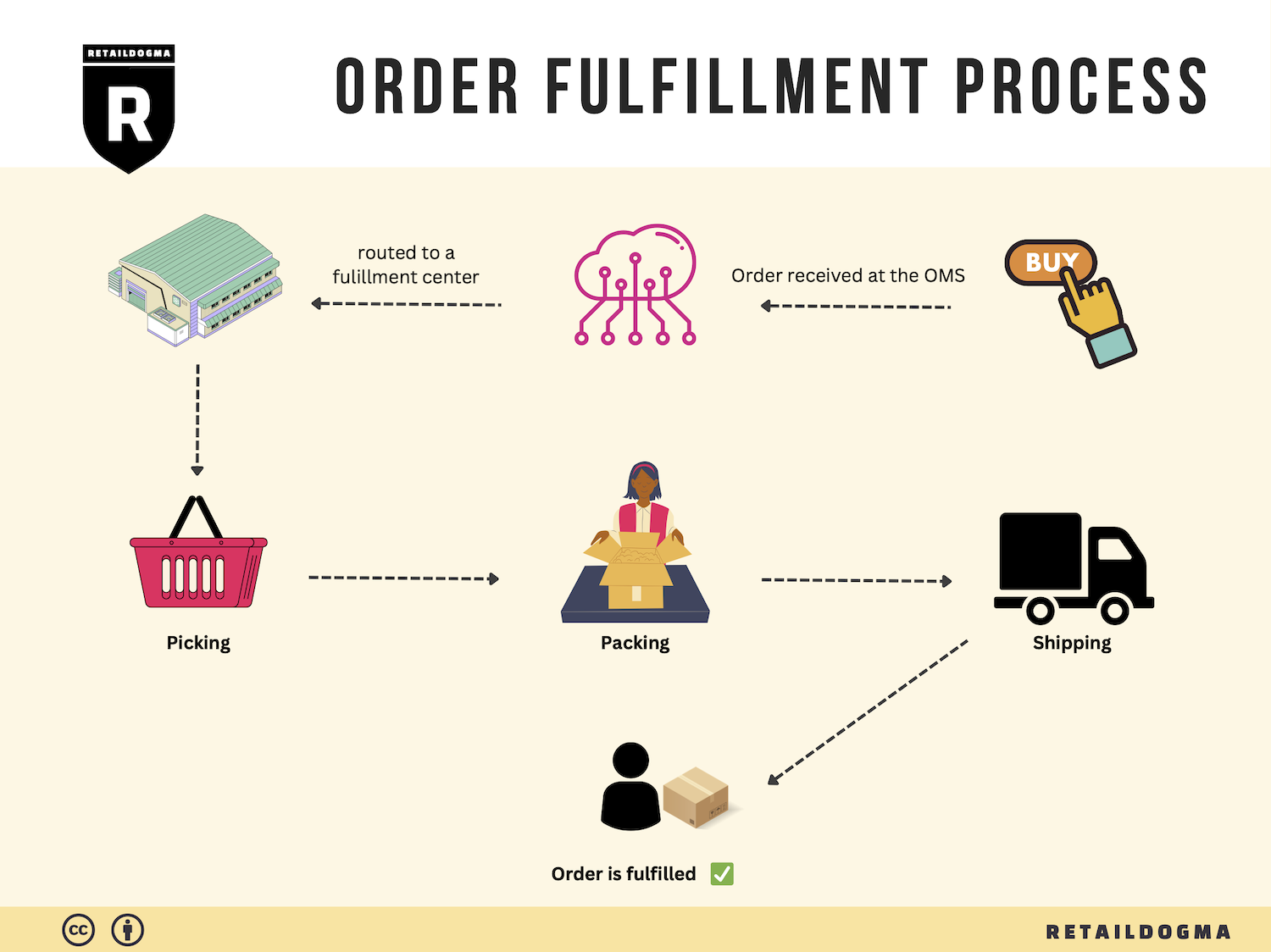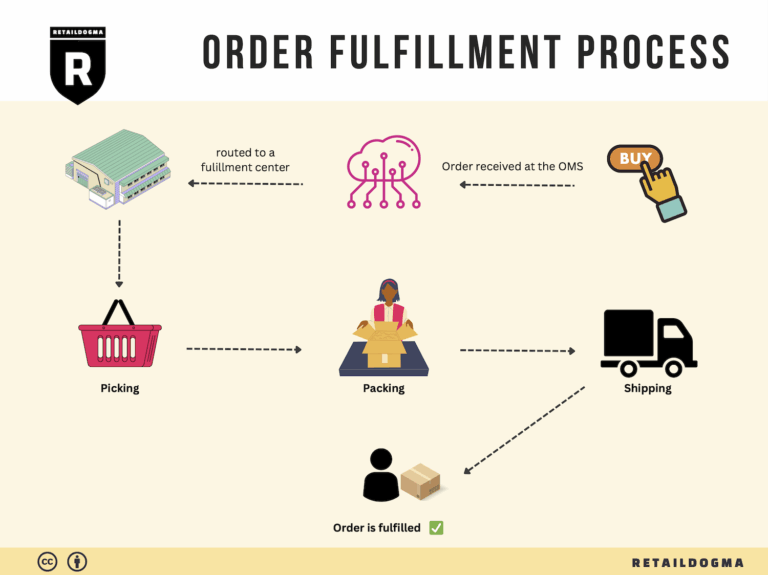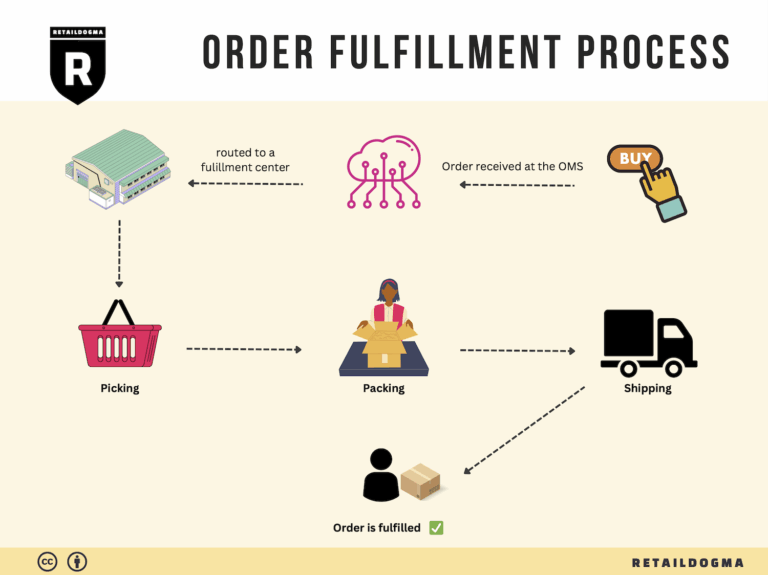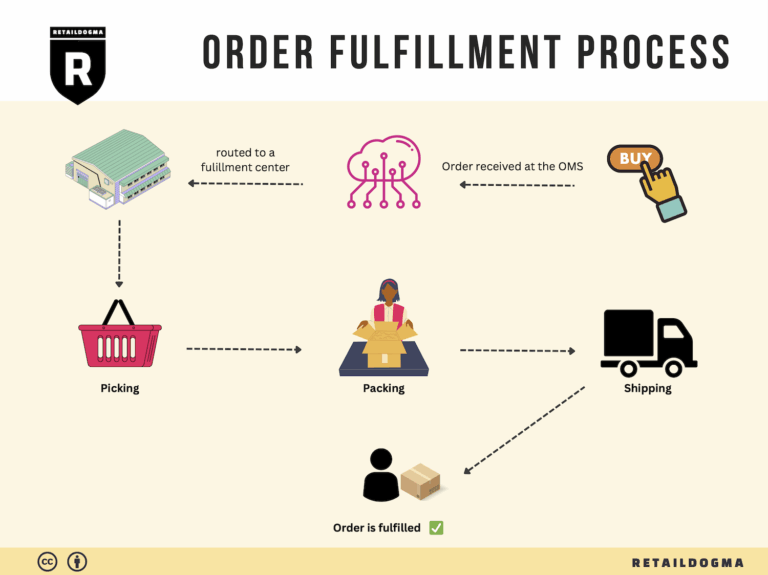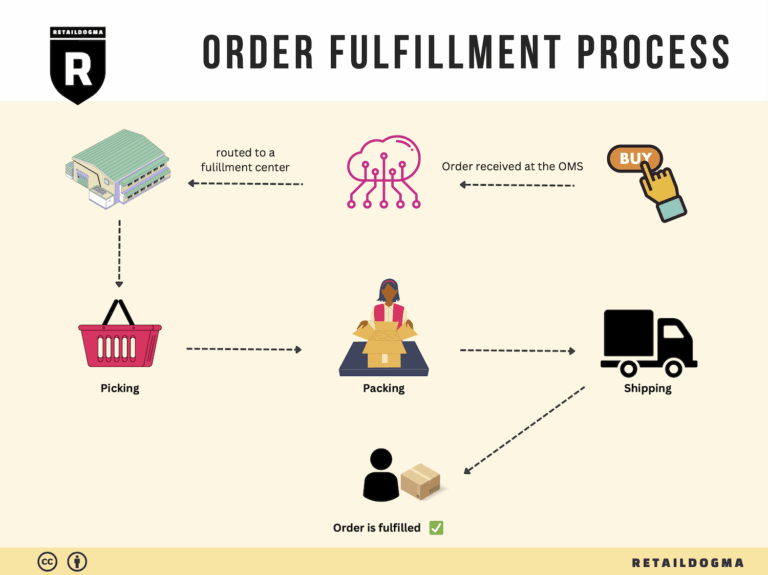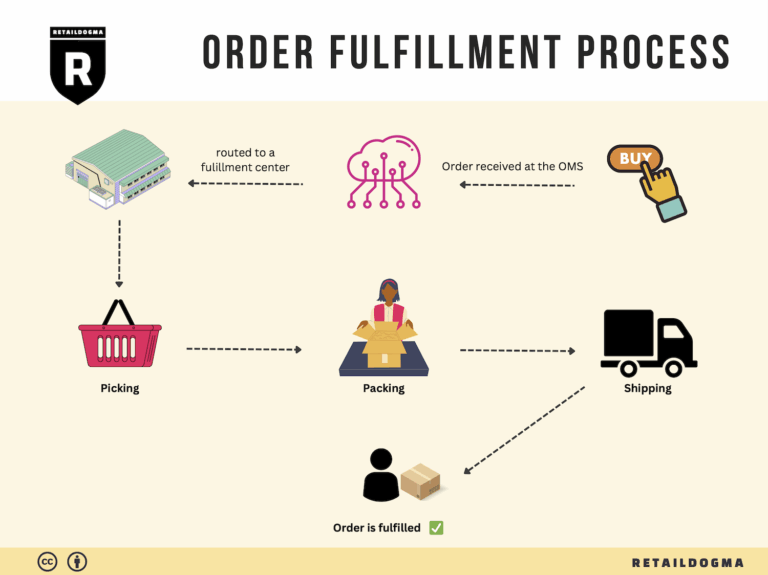How Order Fulfillment Works: A Step-by-Step Guide for Businesses
What is E-commerce Fulfillment? An Introduction for Growing Businesses
Understanding E-commerce Fulfillment: A Key to Scaling Your Business
As an e-commerce business owner, you may find yourself grappling with one of the most common pain points in the industry: the overwhelming task of packing and shipping orders. As your sales grow, so does the complexity of fulfilling those orders efficiently. The fulfillment process—the journey of getting a product from your warehouse to your customer’s doorstep—can become a significant bottleneck if not managed effectively.
In its simplest terms, e-commerce fulfillment encompasses all the steps involved in delivering a product to a customer after an order is placed. This includes receiving inventory, storing products, picking and packing orders, and shipping them out. With the right fulfillment strategy, businesses can not only streamline operations but also enhance customer satisfaction through timely deliveries and an exceptional unboxing experience.
This guide will explore various e-commerce fulfillment models, including Third-Party Logistics (3PL) and Fulfillment by Amazon (FBA), providing you with insights into the advantages and challenges of each. We will delve into the core services offered by fulfillment partners, such as kitting, inventory management, and shipping options, allowing you to understand what to expect from a logistics provider.
Choosing the right fulfillment partner can be a daunting task. Factors such as scalability, technology integration, and customer support must be considered to ensure that your logistics operations align with your growth ambitions. This guide will outline key criteria to help you make an informed decision when selecting a partner that fits your unique business needs.
Additionally, we will discuss pricing structures associated with different fulfillment models, helping you to evaluate the cost-effectiveness of each option. Understanding the financial implications of your logistics choices is crucial for maintaining healthy profit margins as you scale.
The ultimate goal of this guide is to empower you with the knowledge to make smart, strategic decisions about your logistics operations. By grasping the nuances of e-commerce fulfillment, you can not only alleviate the burden of packing and shipping but also enhance your overall business efficiency, leading to increased customer loyalty and sustained growth.
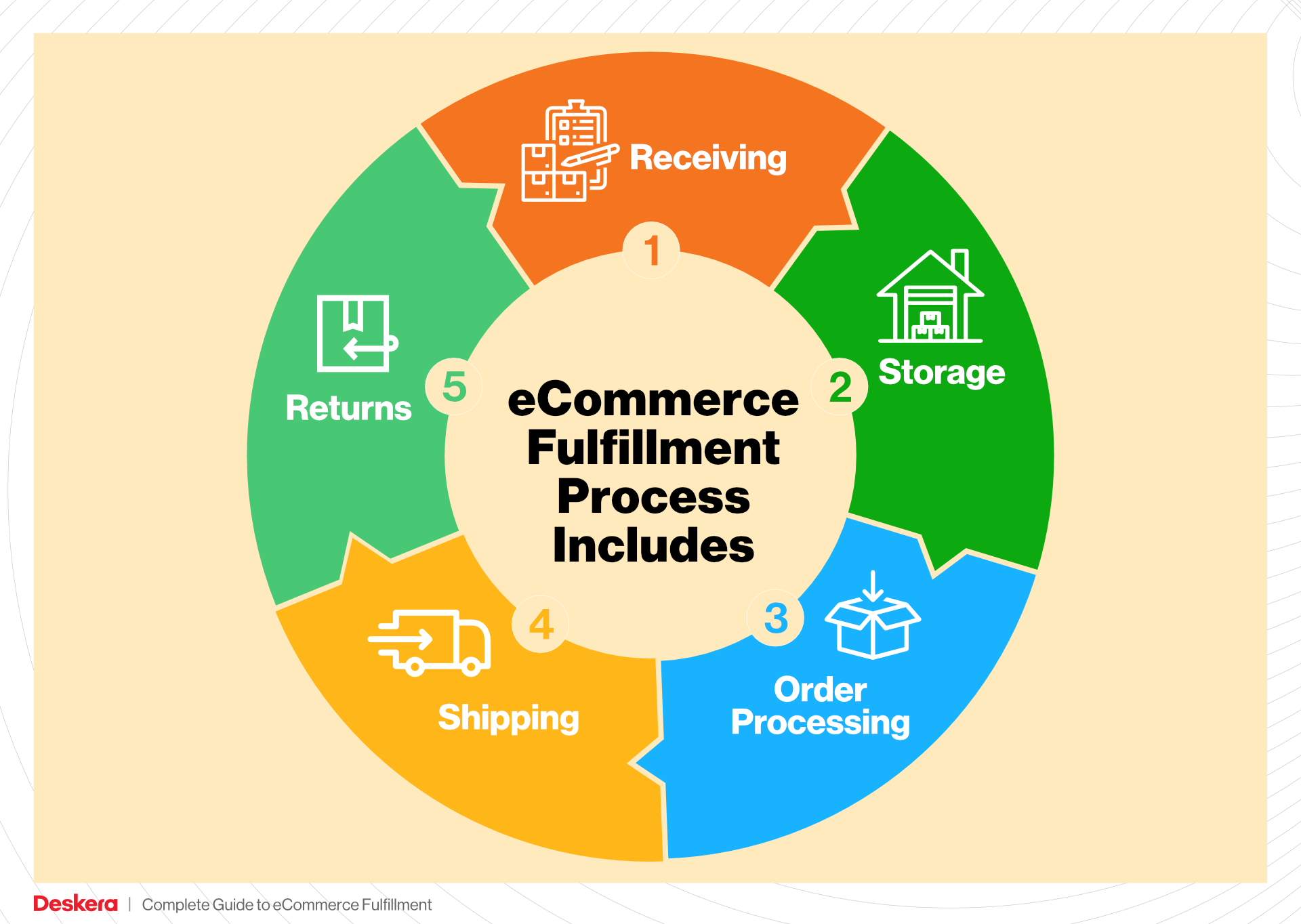
What You’ll Learn In This Guide
- What is E-commerce Fulfillment? An Introduction for Growing Businesses
- The Order Fulfillment Process: From ‘Buy’ Button to Customer’s Door
- Comparing Fulfillment Models: In-House vs. 3PL vs. Dropshipping
- A Deep Dive into Amazon FBA: Pros, Cons, and Who It’s For
- Core Services Offered by Fulfillment Centers
- How to Choose a Fulfillment Partner: A 6-Point Checklist
- Understanding Fulfillment Pricing: A Breakdown of Common Fees
- Frequently Asked Questions (FAQs) about Fulfillment
- Conclusion: Is Outsourcing Fulfillment the Right Move for Your Business?
- Important Disclaimer
The Order Fulfillment Process: From ‘Buy’ Button to Customer’s Door
1. Receiving Inventory
The order fulfillment process begins with receiving inventory from suppliers. This step is crucial as it sets the foundation for effective inventory management and order fulfillment. Upon arrival, each shipment is inspected for accuracy and quality. This involves checking against purchase orders to ensure the right quantities and products are received, alongside performing quality control inspections to identify any damaged or defective items.
The key term associated with this step is SKU (Stock Keeping Unit). Each product is assigned a unique SKU to facilitate tracking and management within the warehouse system. Properly managing inventory at this stage ensures that only sellable products enter your inventory, preventing potential losses and maintaining a high level of customer satisfaction. Efficient receiving processes can significantly reduce lead times and improve overall operational efficiency.
2. Warehouse Storage
Once inventory is received, the next step is warehouse storage. This involves organizing the products in a manner that maximizes space and facilitates quick access when orders come in. Products are strategically placed based on factors such as size, weight, and order frequency. High-demand items are often stored in easily accessible locations, while slower-moving items may be placed farther away.
The associated term here is bin locations. Each product is assigned a specific bin location within the warehouse, which is recorded in the inventory management system. Effective warehouse storage is vital for optimizing picking efficiency and reducing the time spent locating products. A well-organized warehouse can lead to faster order processing times, ultimately enhancing customer satisfaction through quicker delivery.
3. Order Picking
When a customer places an order, the next step is order picking. This process involves retrieving the specific items from their designated bin locations in the warehouse to fulfill the order. Depending on the fulfillment strategy, order picking can be done in various ways, such as single order picking, batch picking, or wave picking.
The key term related to this step is pick lists. A pick list is generated for each order, detailing the items and their locations within the warehouse. This document guides warehouse staff in efficiently gathering the ordered items. Efficient order picking is critical because it directly impacts the speed and accuracy of order fulfillment. An organized picking process minimizes errors and ensures that customers receive the correct items, contributing to a positive customer experience.
4. Order Packing
After the items are picked, the next step is order packing. This involves preparing the items for shipment, which includes placing them in appropriate packaging, adding protective materials to prevent damage during transit, and attaching shipping labels. The packing process also allows for any necessary documentation, such as invoices or return instructions, to be included.
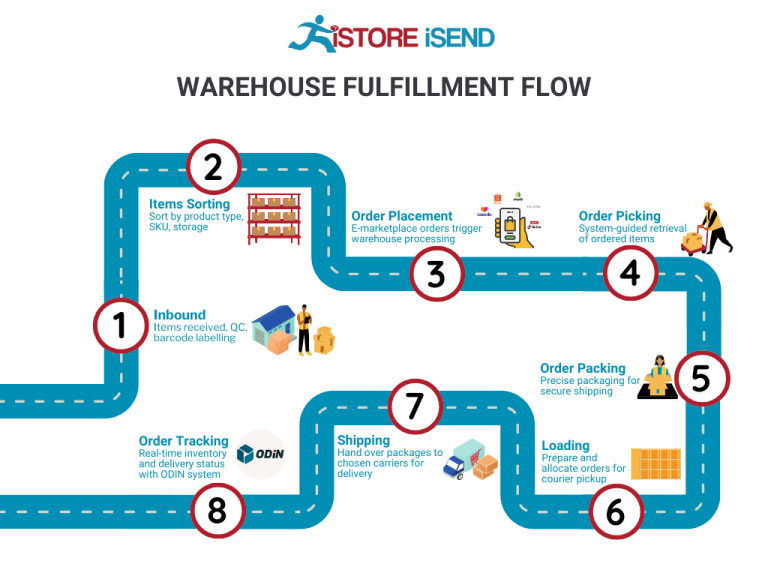
The term to note in this step is packing slips. A packing slip is a document that lists the items included in the shipment and provides essential information for both the warehouse team and the customer. Proper packing is essential for ensuring that products arrive safely at their destination. It also enhances the unboxing experience, which can significantly influence customer satisfaction and retention. A well-packed order reflects professionalism and attention to detail, fostering customer loyalty.
5. Shipping & Delivery
The final step in the order fulfillment process is shipping and delivery. Once the order is packed, it is handed over to a shipping carrier, which is responsible for transporting the package to the customer’s address. This phase includes selecting the appropriate shipping method based on factors such as cost, delivery speed, and the customer’s preferences.
The associated term here is shipping labels. These labels contain critical information such as the destination address, tracking number, and return information. Efficient shipping processes are essential for maintaining competitive advantage in the e-commerce landscape. Providing customers with tracking information enhances transparency and allows them to monitor their orders, which is increasingly expected in today’s market.
In summary, each step of the order fulfillment process—from receiving inventory to shipping and delivery—plays a pivotal role in the overall efficiency and effectiveness of an e-commerce operation. By mastering these steps, businesses can scale their operations, improve customer satisfaction, and ultimately drive revenue growth.
Comparing Fulfillment Models: In-House vs. 3PL vs. Dropshipping
Fulfillment Model Comparison Table
| Model | Who Handles Inventory | Best For (Business Stage) | Key Advantage | Key Disadvantage |
|---|---|---|---|---|
| In-House Fulfillment | The business itself | Startups to established brands | Full control over inventory and processes | High overhead costs and resource-intensive |
| Third-Party Logistics (3PL) | A third-party logistics provider | Growth-stage businesses | Scalability and access to expertise | Less control over fulfillment processes |
| Dropshipping | Suppliers or manufacturers | Startups and niche markets | Low startup costs and no inventory risk | Lower profit margins and potential delays |
In-House Fulfillment
In-house fulfillment is when a business manages its entire inventory and order fulfillment process internally. This model allows for complete control over operations, including inventory management, picking, packing, and shipping. For startups and established brands that have the resources to manage their own warehouses, in-house fulfillment can provide a tailored customer experience. Businesses can implement custom kitting processes, ensuring that products are packaged in a way that aligns with their branding and enhances customer satisfaction. However, this model comes with significant drawbacks, such as high overhead costs associated with maintaining a warehouse, hiring staff, and investing in technology for inventory management and shipping logistics. Additionally, as a business scales, the complexity and resource demands of in-house fulfillment can become overwhelming, leading to potential inefficiencies.
Third-Party Logistics (3PL)
Third-party logistics (3PL) involves outsourcing the logistics and fulfillment process to a specialized provider. This model is particularly beneficial for growth-stage businesses that need to scale operations without the overhead of managing their own warehouse. By partnering with a 3PL, companies gain access to advanced logistics expertise, technology, and infrastructure, including kitting services that streamline the fulfillment process. This can lead to faster shipping times, improved accuracy, and the ability to focus on core business activities like marketing and product development. However, the key disadvantage of using a 3PL is the loss of direct control over the fulfillment process. This can create challenges in maintaining consistent quality and customer service standards, as businesses rely on their 3PL partners to execute these critical functions. Moreover, businesses must ensure clear communication and alignment with their 3PL to avoid any operational hiccups.
Dropshipping
Dropshipping is a fulfillment model where the retailer does not hold inventory but instead transfers customer orders directly to the supplier, who then ships the products on behalf of the retailer. This model is particularly appealing to startups and niche markets as it eliminates the need for upfront inventory investment and reduces financial risk. Entrepreneurs can test new products without the burden of inventory management and storage costs. Dropshipping can also facilitate a diverse product offering, allowing businesses to respond quickly to market trends. However, the downsides include lower profit margins due to reliance on supplier pricing and potential delays in shipping, which can negatively affect customer satisfaction. Additionally, the retailer has limited control over product quality and fulfillment speed, making it essential to partner with reliable suppliers to mitigate these risks.
Conclusion
Choosing the right fulfillment model is critical for e-commerce businesses looking to scale. Each model has its unique advantages and challenges, making it essential for business owners to assess their specific needs, resources, and growth stage. Whether opting for in-house fulfillment, leveraging a 3PL, or adopting dropshipping, the decision should align with the overall business strategy and customer experience goals. By understanding these models, e-commerce entrepreneurs can make informed decisions that enhance their operations and drive sales growth.
A Deep Dive into Amazon FBA: Pros, Cons, and Who It’s For
Understanding Fulfillment by Amazon (FBA)
Fulfillment by Amazon (FBA) is a service provided by Amazon that allows e-commerce sellers to store their products in Amazon’s fulfillment centers. Amazon then takes care of storage, packaging, shipping, and customer service for these products. This model enables businesses to leverage Amazon’s vast logistics network, making it easier for sellers to reach customers, particularly through the Amazon marketplace.
How FBA Works
-
Setup: Sellers create an Amazon seller account and enroll in FBA. They then prepare their products according to Amazon’s guidelines.
-
Shipping Inventory: Sellers ship their products to Amazon’s fulfillment centers. Depending on the seller’s location and the product types, Amazon may direct shipments to multiple centers to optimize delivery times.
-
Storage: Once the inventory arrives at Amazon, it is stored in their warehouses. Amazon manages the inventory levels and provides sellers with insights on stock performance.
-
Order Fulfillment: When a customer places an order for a product fulfilled by Amazon, Amazon picks, packs, and ships the product directly to the customer. Sellers benefit from Amazon’s efficient shipping processes, including Amazon Prime.
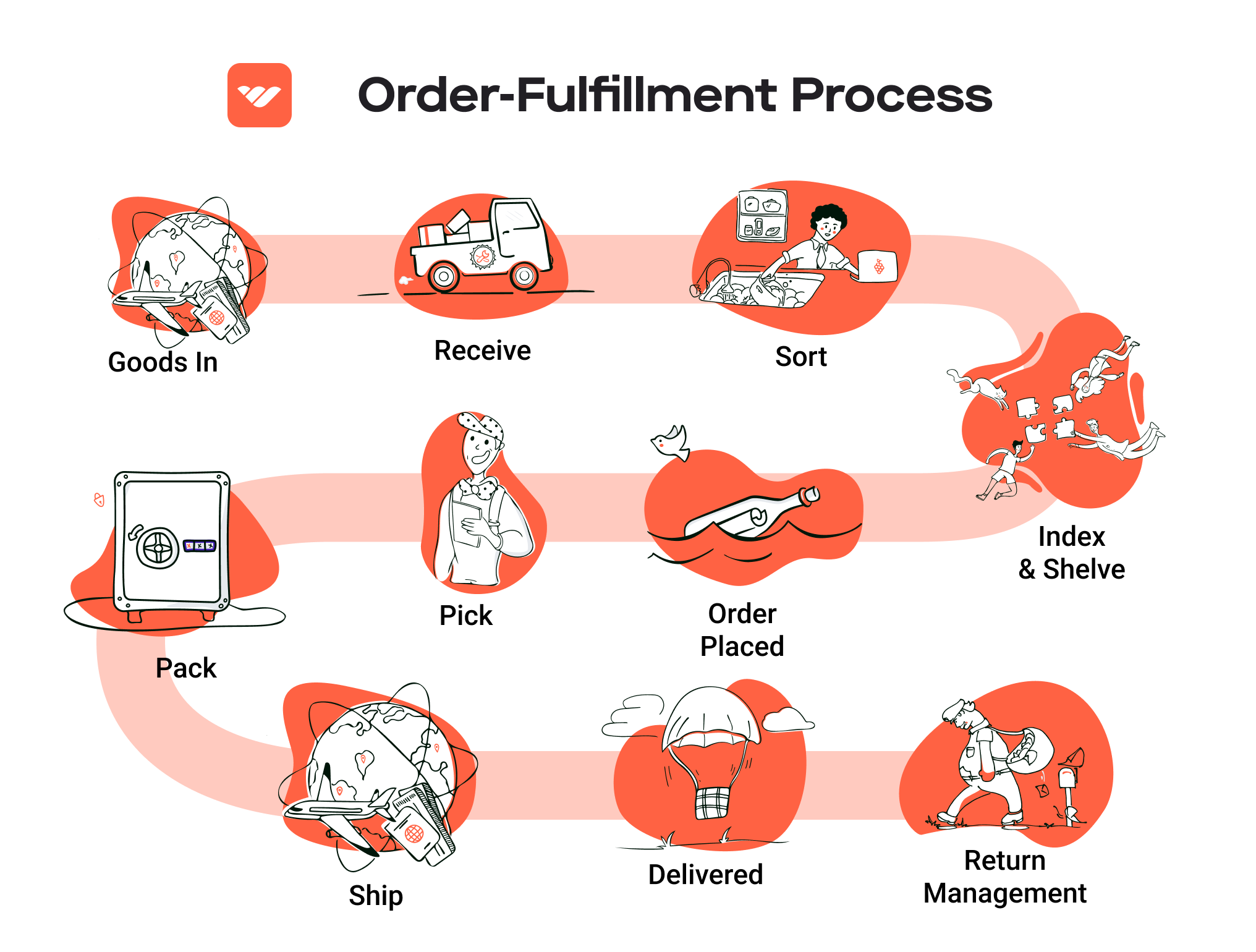
-
Customer Service: Amazon handles all customer service inquiries and returns for FBA products, allowing sellers to focus on other aspects of their business.
Pros of FBA
1. Prime Eligibility
One of the most significant advantages of FBA is that products become eligible for Amazon Prime. This status not only increases visibility but also attracts Prime members who prefer faster shipping options. Prime customers often exhibit higher purchasing frequencies, which can lead to increased sales for sellers.
2. Customer Trust
Amazon is a trusted brand, and utilizing FBA can enhance the credibility of your products. Customers are more likely to buy from sellers who use FBA due to the assurance of reliable shipping, easy returns, and excellent customer service. This trust can convert potential buyers into loyal customers.
3. Multi-Channel Fulfillment
FBA allows sellers to fulfill orders not only from Amazon but also from other sales channels. This means businesses can use FBA to manage orders from their own websites or other platforms, centralizing their fulfillment process. This flexibility enables sellers to streamline operations and reduce logistical headaches.
4. Efficient Logistics
Amazon’s extensive logistics network and advanced technology facilitate fast and efficient order fulfillment. The company has invested heavily in its warehousing and shipping capabilities, which can significantly reduce shipping times and enhance the customer experience.
5. Time-Saving
By outsourcing fulfillment to Amazon, sellers can save substantial time and resources. They can focus on marketing, product development, and other critical aspects of their business while Amazon manages the storage, packing, and shipping processes.
Cons of FBA
1. High Fees
While FBA provides numerous benefits, it comes at a cost. Amazon charges various fees, including storage fees based on the volume of products stored and fulfillment fees for each item sold. These costs can add up quickly, especially for low-margin products, impacting overall profitability.
2. Strict Inventory Rules
FBA has specific guidelines and policies regarding inventory management. Sellers must adhere to Amazon’s strict requirements for labeling, packaging, and shipping their products. Failure to comply can lead to additional fees or even account suspension, making it crucial for sellers to be well-versed in these rules.
3. Commingling Risks
Amazon commingles inventory from different sellers to streamline the fulfillment process, which can pose risks. If a customer receives a defective or subpar product, it may reflect poorly on your brand, even if the issue originated from another seller’s inventory. This lack of control over inventory quality can be concerning for many sellers.
4. Limited Control
Using FBA means relinquishing some control over the fulfillment process. Sellers are dependent on Amazon’s policies and practices, which can change without notice. This reliance can be a drawback for businesses that prefer more control over their logistics and customer service experiences.
5. Inventory Restrictions
Certain products may be restricted from FBA or subject to additional regulations. This can limit the types of items you can sell through the FBA program, particularly for categories that require special handling or compliance with specific regulations.
Who is FBA Best For?
Fulfillment by Amazon is best suited for small to medium-sized e-commerce businesses looking to scale quickly without the overhead of managing their own logistics. It is particularly advantageous for sellers who:
-
Sell High-Demand Products: If your products are in high demand, the benefits of FBA, such as Prime eligibility and efficient fulfillment, can significantly boost sales.
-
Focus on Growth: Businesses aiming to grow rapidly and expand their reach can leverage Amazon’s vast audience and logistics capabilities to gain market share.
-
Want to Simplify Operations: If managing warehousing and shipping logistics is overwhelming, FBA can alleviate these burdens, allowing sellers to focus on core business activities.
-
Are New to E-commerce: New sellers can benefit from the established trust and customer base of Amazon, making it easier to enter the market.
In conclusion, while FBA offers numerous advantages, it is essential for sellers to weigh these against the potential downsides. Understanding how FBA aligns with your business model and goals will help you make informed decisions about whether to incorporate it into your fulfillment strategy.
Core Services Offered by Fulfillment Centers
Inventory Management & Warehousing
Inventory management and warehousing form the backbone of any successful e-commerce operation. Fulfillment centers provide robust systems for tracking inventory levels, managing stock across multiple locations, and ensuring that products are stored in an organized manner. These centers utilize advanced software solutions that offer real-time visibility into inventory status, enabling businesses to monitor stock levels, forecast demand, and reduce the risk of stockouts or overstocking.
Benefits:
1. Optimized Stock Levels: By having a clear picture of inventory levels, e-commerce businesses can maintain optimal stock, reducing the costs associated with excess inventory and lost sales due to stockouts.
2. Efficient Space Utilization: Fulfillment centers use sophisticated storage systems to maximize warehouse space, ensuring that products are stored in the most efficient manner possible, which can lead to lower operational costs.
3. Improved Order Accuracy: Accurate inventory management minimizes the chances of errors in order fulfillment, enhancing customer satisfaction and trust in the brand.
Pick and Pack Services
Pick and pack services involve the process of selecting ordered items from warehouse shelves and packing them for shipment. Fulfillment centers streamline this process by using technology to automate and optimize picking routes, ensuring that the most efficient methods are employed to prepare orders quickly and accurately.
Benefits:
1. Faster Order Fulfillment: Automated systems and optimized workflows allow for rapid picking and packing, significantly reducing the time it takes to process an order from receipt to shipment. This speed can enhance customer satisfaction through quicker delivery times.
2. Scalability: As businesses grow, fulfillment centers can easily scale their pick and pack services to accommodate increased order volumes without compromising quality or speed.
3. Error Reduction: With advanced picking technologies, such as barcode scanning and inventory management software, the likelihood of picking errors is greatly diminished, leading to higher order accuracy rates and fewer returns.
Kitting and Assembly
Kitting and assembly services involve the preparation of products in a way that makes them ready for sale as a single unit or kit. This might include assembling multiple items into a custom package or simply pre-packaging items together. Fulfillment centers often offer kitting services to enhance the presentation and efficiency of order fulfillment, which can significantly influence customer experience.
Benefits:
1. Enhanced Customer Experience: By offering products as kits or bundles, businesses can provide customers with a curated shopping experience that adds perceived value. This not only improves customer satisfaction but also encourages repeat purchases.
2. Operational Efficiency: Pre-assembling kits allows fulfillment centers to streamline the packing process, as staff only need to pick and ship a single SKU instead of multiple items. This efficiency translates to faster shipping times and reduced labor costs.
3. Inventory Management: Kitting helps in simplifying inventory management by allowing multiple products to be tracked as a single SKU, making it easier to monitor stock levels and turnover rates.
Returns Management (Reverse Logistics)
Returns management, or reverse logistics, is a critical service offered by fulfillment centers that deals with the process of handling returned products. This includes receiving, inspecting, restocking, or disposing of returned items. A well-managed returns process is essential for maintaining customer satisfaction and loyalty, as it reflects how a business values its customers’ experiences.
Benefits:
1. Customer Retention: An efficient returns process can significantly enhance customer loyalty. When customers know they can return items easily and without hassle, they are more likely to make purchases, even if they are uncertain about a product.
2. Cost Efficiency: Fulfillment centers can optimize the reverse logistics process by consolidating returns and restocking items in a streamlined manner, reducing the costs associated with handling returns.
3. Data Insights: Analyzing return data can provide valuable insights into product performance and customer preferences, allowing businesses to make informed decisions about inventory, marketing, and product development.
In conclusion, leveraging the core services offered by fulfillment centers can significantly enhance an e-commerce business’s operational efficiency, customer satisfaction, and overall scalability. By optimizing inventory management, streamlining pick and pack services, utilizing kitting and assembly, and effectively managing returns, businesses can position themselves for sustained growth and success in the competitive e-commerce landscape.
How to Choose a Fulfillment Partner: A 6-Point Checklist
Location & Warehouse Network
Importance:
The geographic location of your fulfillment partner’s warehouses can significantly impact shipping times and costs. A well-distributed network allows for faster delivery to your customer base, which is crucial for maintaining customer satisfaction and loyalty.
Questions to Ask:
– Where are your warehouses located, and how does this align with our target market?
– Can you provide shipping times to our key regions?
– Do you have a strategy for expanding your warehouse network to meet increasing demand?
Technology & Integrations
Importance:
Modern e-commerce relies heavily on technology for inventory management, order processing, and customer communication. A fulfillment partner should offer robust technology solutions that seamlessly integrate with your existing systems, such as e-commerce platforms and inventory management tools.
Questions to Ask:
– What technology do you use for order management and inventory tracking?
– How do you handle integrations with e-commerce platforms like Shopify, WooCommerce, or Amazon?
– Can you provide real-time tracking for orders, and how is that communicated to our customers?
Specializations (e.g., Cold Storage, Oversized Items)
Importance:
Depending on the nature of your products, you may require specific handling capabilities. For instance, if you sell perishable goods, your fulfillment partner must have cold storage solutions. Understanding their specializations can help ensure your products are stored and handled correctly.
Questions to Ask:
– What types of products do you specialize in handling (e.g., fragile items, perishable goods, oversized products)?
– Do you have any certifications or compliance measures in place for specialized storage?
– How do you ensure quality control for specialized items during the picking and packing process?
Scalability & Capacity
Importance:
As your business grows, your fulfillment needs will likely change. It’s crucial to partner with a fulfillment provider that can scale operations in line with your business growth without compromising service quality.
Questions to Ask:
– What is your current capacity, and how do you handle peak seasons or unexpected demand spikes?
– Can you provide examples of how you’ve scaled operations for other clients?
– What is your process for forecasting and managing inventory levels during growth periods?
Pricing and Contracts
Importance:
Understanding the pricing structure is essential for budgeting and forecasting. Transparent pricing helps you avoid unexpected costs and ensures you can maintain profit margins as you scale.
Questions to Ask:
– What are your pricing models (e.g., per order, per item, monthly fees)?
– Are there any hidden fees we should be aware of (e.g., storage fees, pick-and-pack fees)?
– What are the contract terms, and is there flexibility for renegotiation as our needs change?
Customer Support & Reviews
Importance:
Reliable customer support can be a game-changer in logistics and fulfillment. A responsive partner can help resolve issues quickly, which is vital for maintaining operational efficiency and customer satisfaction.
Questions to Ask:
– What customer support channels do you offer (e.g., phone, email, chat)?
– How quickly can we expect a response to inquiries or issues?
– Can you provide references or reviews from current clients, particularly those in our industry?
Conclusion
Choosing the right fulfillment partner is a critical decision that can significantly influence your e-commerce operations and customer satisfaction. By carefully evaluating potential partners through this checklist, you can ensure that you select a provider that aligns with your business needs and growth aspirations. Always remember to conduct thorough research and ask for detailed answers to your questions, as this will help you make an informed decision that supports your long-term success.
Understanding Fulfillment Pricing: A Breakdown of Common Fees
Initial Setup Fees
When partnering with a third-party logistics (3PL) provider, businesses often encounter initial setup fees. These fees are typically charged to cover the administrative and operational costs associated with onboarding a new client. Initial setup can include the configuration of your products in the fulfillment system, integration with your e-commerce platform, and training on using the 3PL’s software.
The calculation of initial setup fees can vary significantly depending on the complexity of the integration and the volume of products being handled. For example, a business with a straightforward catalog might face lower setup costs than a company with a wide range of SKUs requiring extensive customization. Expect to see setup fees ranging from a few hundred to several thousand dollars, depending on your specific needs.
Receiving Fees
Receiving fees are charged when inventory arrives at the fulfillment center. These fees cover the labor and resources needed to unload, inspect, and store incoming shipments. The process usually involves checking for damages, ensuring quantities match the shipping documents, and updating inventory systems.
Typically, receiving fees are calculated based on the volume of goods being received, often measured in weight or number of pallets. For instance, you might encounter charges like $25 to $50 per pallet or a per-unit fee for smaller items. Understanding how receiving fees are structured can help you better anticipate costs as you scale your inventory.
Storage Fees (per pallet/bin)
Storage fees are incurred for keeping your inventory at the fulfillment center. These fees can be based on the space your products occupy, often measured in pallets or bins. Storage costs can vary widely based on location, the type of inventory, and the length of time products remain in storage.
For example, storage fees might range from $10 to $30 per pallet per month, while smaller items stored in bins might incur a flat monthly fee or be charged per bin. To manage these costs effectively, consider optimizing your inventory turnover and being mindful of seasonal fluctuations to minimize the time products spend in storage.
Pick & Pack Fees (per item/order)
Pick and pack fees are charged for the labor involved in retrieving items from inventory and preparing them for shipment. This process is crucial in order fulfillment, especially for businesses that utilize kitting and bundling strategies.
These fees are generally calculated either per item or per order. For instance, a fulfillment center might charge $1 to $5 per item picked, or a flat fee for each order processed, which could range from $2 to $10. The complexity of your fulfillment process can influence these costs; kitting operations may incur higher pick and pack fees due to the additional labor required to assemble kits. It’s essential to understand these fees, as they can significantly impact your overall fulfillment costs.
Shipping Fees
Shipping fees are among the most variable costs in fulfillment and can depend on various factors, including the shipping method, destination, and package dimensions. Fulfillment centers typically offer different shipping options, ranging from economy to express services, with corresponding price points.
Shipping fees are generally calculated based on weight, dimensions, and distance. For example, a lightweight package shipped domestically might cost $5 to $15, while heavier packages or international shipments could escalate quickly. Some 3PLs may offer volume discounts or special rates with carriers, so it’s worth discussing your shipping needs and potential savings during your negotiations.
Tips for Getting an Accurate Quote
-
Clearly Define Your Needs: Before reaching out for quotes, have a clear understanding of your inventory, order volume, and specific fulfillment requirements (like kitting). This clarity will help providers give you accurate estimates.
-
Request Detailed Breakdown: When you receive quotes, ask for a detailed breakdown of all potential fees. Understanding each component will help you compare providers more effectively.
-
Consider Seasonal Variability: If your business has seasonal peaks, inquire about how your costs might change during those periods. Some providers may offer flexible options to accommodate fluctuations in order volume.
-
Negotiate: Don’t hesitate to negotiate terms and pricing with potential 3PL partners. They may offer discounts for long-term contracts or higher volumes.
-
Evaluate Additional Services: Consider what additional services may be included in the pricing. For example, some 3PLs might offer free returns processing or value-added services that could offset costs elsewhere.
By understanding these common fulfillment pricing models and following these tips, you can make informed decisions that align with your scaling strategy and operational goals.
Frequently Asked Questions (FAQs) about Fulfillment
1. What is kitting in e-commerce fulfillment?
Kitting in e-commerce fulfillment refers to the process of assembling multiple products into a single package or “kit” before they are sold to customers. This can involve gathering various items, packaging them together, and labeling them as one SKU. Kitting streamlines the fulfillment process by allowing warehouse staff to pick a single kit instead of multiple individual items when an order is placed.
2. What is the difference between kitting and assembly?
While both kitting and assembly involve preparing products for sale, they are not the same. Kitting focuses on gathering pre-packaged items into a single unit, such as placing several products in a custom box. Assembly, on the other hand, involves modifying or constructing a product from its components, like building furniture from parts.
3. How does kitting improve customer experience?
Kitting enhances customer experience by providing a tailored, organized package that delights customers upon unboxing. It also speeds up order fulfillment, allowing for quicker delivery times, which customers appreciate. Additionally, well-curated kits can offer greater perceived value, leading to increased customer satisfaction and loyalty.
4. What are the benefits of using kitting services?
Utilizing kitting services can lead to several benefits, including:
– Improved warehouse efficiency: Kitting allows for easier storage and retrieval of products since kits are stored as single units.
– Streamlined order fulfillment: Reduces picking time as only one item (the kit) needs to be picked.
– Fewer manufacturing errors: Kitting can help identify and rectify mistakes before products reach customers.
– Faster shipping: Pre-assembled kits can be shipped quicker, enhancing overall delivery times.
– Increased average order value (AOV): Bundled products can entice customers to purchase more due to perceived value.
5. What is a fulfillment center?
A fulfillment center is a specialized warehouse that focuses on storing products, processing orders, and shipping items directly to customers on behalf of e-commerce businesses. Unlike traditional warehouses, fulfillment centers are equipped to handle the logistics of order fulfillment, including inventory management, order picking, packing, and shipping.
6. What is a 3PL, and how do they relate to kitting?
A 3PL, or third-party logistics provider, is a company that offers outsourced logistics services, including warehousing, fulfillment, and shipping. Many 3PLs provide kitting services as part of their offerings, allowing e-commerce businesses to streamline their operations and focus on sales and marketing while the 3PL handles the complexities of inventory management and order fulfillment.
7. How much do fulfillment services cost?
The cost of fulfillment services varies widely based on several factors, including the size and weight of products, order volume, the complexity of kitting, and specific services required (like packaging and labeling). On average, businesses can expect to pay a combination of storage fees, pick-and-pack fees, and shipping costs. It’s important to request quotes from multiple providers to compare pricing and services.
8. What types of products are suitable for kitting?
Kitting is suitable for a wide range of products, particularly those that complement each other or are frequently purchased together. Examples include subscription boxes, gift sets, promotional bundles, and seasonal kits. Products that benefit from kitting often enhance the customer experience by providing convenience and value.
9. Can kitting be customized for my brand?
Yes, kitting can be highly customized to align with your brand’s identity and customer preferences. This includes personalized packaging, product selection, and even unique labeling. Customization not only strengthens your brand but also enhances the unboxing experience for your customers.
10. How can I implement kitting in my fulfillment process?
To implement kitting in your fulfillment process, start by identifying products that can be bundled together. Next, choose a fulfillment provider that offers kitting services, and collaborate with them to design your kits. Ensure that your inventory management system is set up to track the kitted products as single SKUs. Regularly assess the performance of your kits to optimize offerings based on customer feedback and sales data.
Conclusion: Is Outsourcing Fulfillment the Right Move for Your Business?
Evaluating the Benefits of Outsourcing Fulfillment
Outsourcing fulfillment can be a transformative decision for e-commerce businesses looking to scale effectively. By partnering with a specialized fulfillment service, you can save valuable time, allowing you to focus on core business functions such as product development, marketing, and customer engagement. Instead of managing the complexities of warehousing, inventory management, and order processing, you can leverage the expertise of professionals who specialize in these areas.
One of the most compelling advantages of outsourcing is scalability. As your business grows, so do your fulfillment needs. A fulfillment partner can easily adjust to fluctuations in demand, whether it’s during peak seasons or as you launch new products. This flexibility ensures that you can meet customer expectations without the logistical headaches of managing increased order volumes in-house.
Moreover, a reputable fulfillment service brings a wealth of knowledge and industry best practices that can enhance your operational efficiency. From optimized picking processes to advanced inventory management systems, these partners offer solutions that improve accuracy and reduce shipping times, ultimately leading to increased customer satisfaction and retention.
However, the success of outsourcing fulfillment hinges on selecting the right partner. Take the time to evaluate potential fulfillment services based on their capabilities, technology, and customer support. A misalignment in values or operational styles can hinder your growth rather than facilitate it.
Call to Action
As you consider the potential benefits of outsourcing fulfillment, it’s essential to conduct a thorough audit of your current shipping processes. Assess your operational bottlenecks, shipping times, and customer feedback to determine if a fulfillment partner could enhance your business model. Taking this strategic step can set the stage for sustainable growth and improved customer experiences.
Important Disclaimer
⚠️ Important Disclaimer
The information in this guide is for educational purposes. Fulfillment services, pricing, and platform features change frequently. Always conduct your own due diligence and consult with providers directly before making business decisions.
